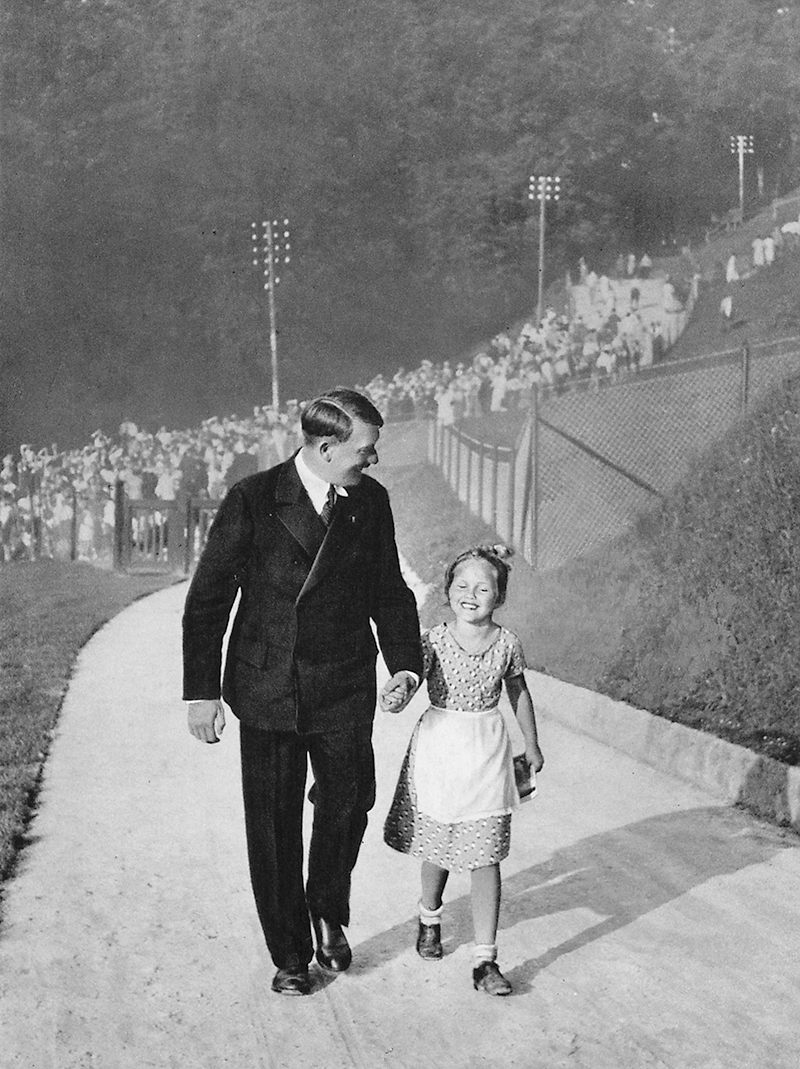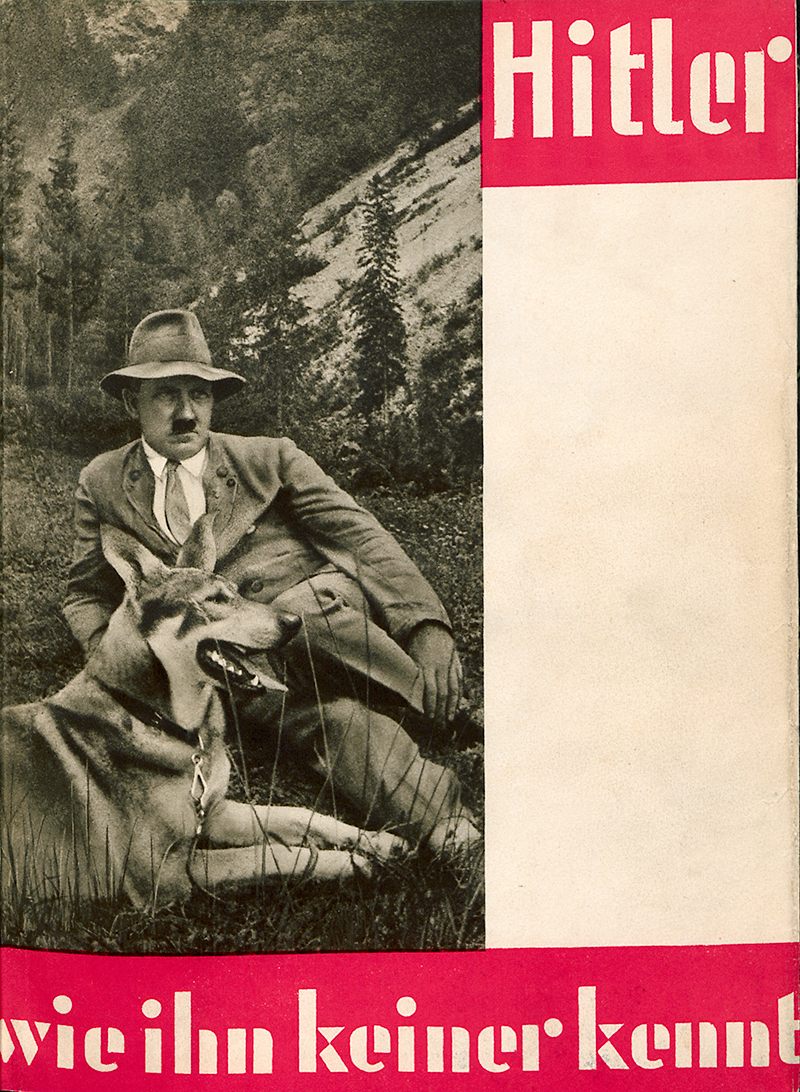The American Media’s Awkward Fawning Over Hitler’s Taste in Home Decor

A view of the window in the Great Hall of the Berghof, 1936. (Photo: Bavarian State Library: Heinrich Hoffmann Collection, Picture Archive, Bavarian State Library)
When digging through archives for records of female architects and designers active in the 1930s, Dr. Despina Stratigakos, an architectural historian at the University at Buffalo, came across something unexpected.
She found old files from the Nazi party–and owing to their notoriously meticulous record keeping–they contained invoices for things like wooden chairs, carpets, and velvet curtains. One name in particular kept popping up: that of Gerdy Troost, Adolf Hitler’s close confidante and preferred interior designer.
Troost was responsible for decorating Hitler’s homes, from apartments in Berlin and Munich, to the Berghof, his vacation residence in the Bavarian Alps. And in the 1930s, this was excellent fodder for the nascent lifestyle magazines that were quickly growing in popularity in the United States.
Life magazine, the New York Times, and even the American Kennel Club magazine all published lush, full-color spreads of Hitler’s domestic life right up until the onset of the Second World War.

Photograph of Eva Braun’s room in the Berghof with a framed Hitler portrait. The print is pasted into one of Eva Braun’s photographic albums. (Photo: Eva Braun Photographic Albums, National Archives, College Park, MD)
One haunting piece, published in the New York Times magazine in August of 1939, portrayed Hitler at home, showing off his tomato garden and his stylish living room. The story’s title was “Herr Hitler at Home in the Clouds.” The front page of the very same newspaper discussed how Jews were being beaten and their businesses ransacked, while Nazi troops amassed on the Polish border.
“All over the front page was this total, other reality,” says Stratigakos. “I really wonder what people thought at the time. How did they compute Hitler growing tomatoes with what they saw on the front page?”
But this was exactly how Hitler’s propagandists wanted to portray their leader. At this point, in the late 1930s, it was more of a question of which publication didn’t have a “Hitler at Home” story, rather than which one did.

(Photo: Bavarian State Library: Heinrich Hoffmann Collection, Picture Archive, Bavarian State Library)
In Troost’s files, sandwiched between receipts and parchment orders, were letters addressed to her from people in concentration camps, mostly Jews, pleading for help. The sobering combination of artifacts intrigued Stratigakos: “I was asking to myself: what do Hitler’s curtains have to do with the Third Reich and the Holocaust? Why are these things together?”
These questions dogged her, so she poured herself into researching the life of Hitler’s chief designer, and how she played a key role in the Nazi propaganda machine. The result is Stratigakos’ upcoming book, Hitler at Home.

Adolf Hitler escorts a young girl, Rosa Bernile Nienau, to his house on the Obersalzberg. As it turns out, this little girl was half-Jewish. Photograph from Heinrich Hoffman’s “Youth Around Hitler.” (Photo: Heinrich Hoffmann, courtesy of Bavarian State Library)
According to Stratigakos, the propaganda machine had two goals for Hitler’s public persona: “There was this thundering leader, the messiah on the podium. And then there was this guy who was shown playing with his dogs, who was really relatable and evoked our empathy. The two depictions really worked well together,” she continues, “People really like the powerful leader, but one that they could actually relate to.”
And making Hitler seem relatable was exactly what his interior designer, Troost, intended to do. “I wanted to show [in the book] that these ‘fluff’ pieces are not harmless. I want people to pay attention to them,” says Stratigakos. “People seem to think, ‘Oh it’s just decor, or it’s mundane, and it doesn’t have any moral value to it.’ But people need to look at this kind of media as critically as they look at more political media.”
World War II had already begun when Life decided to publish photos of Hitler’s living spaces, as well as photos of some of his paintings. Apparently, the feature had been planned well before Germany invaded Poland, beginning World War II, but the editors decided to run it anyway. The magazine’s editorial staff, naturally aware of world events, decided to write slightly mocking image captions, lampooning Hitler’s sensibilities and the hypocrisy of his taste when compared to his leadership style.

The cover of Heinrich Hoffmann’s book, “The Hitler Nobody Knows,” features Adolf Hitler in a country landscape. Photographs showing Hitler in country settings with animals and children were published around the world in the 1930s. Credit: Heinrich Hoffmann, courtesy of Bavarian State Library
But American readers were not happy about this. “People actually wrote in, taking Life magazine to task for treating Hitler sarcastically,” says Stratigakos. “One of the letters I remember reading even says something along the lines of, ‘you know, Hitler’s house is far more tasteful than Roosevelt’s.’ So the response was really surprising. American readers did not appreciate the magazine making fun of Hitler’s taste.”
All this while the war had started, and the wheels of industrial genocide had begun to turn. “People bought into this notion of a non-political, domestic Hitler, and this was exactly what the propagandists wanted,” notes Stratigakos. “There were built-in audiences for these kind of stories. It’s profoundly uncomfortable, and truly haunting.”























Follow us on Twitter to get the latest on the world's hidden wonders.
Like us on Facebook to get the latest on the world's hidden wonders.
Follow us on Twitter Like us on Facebook